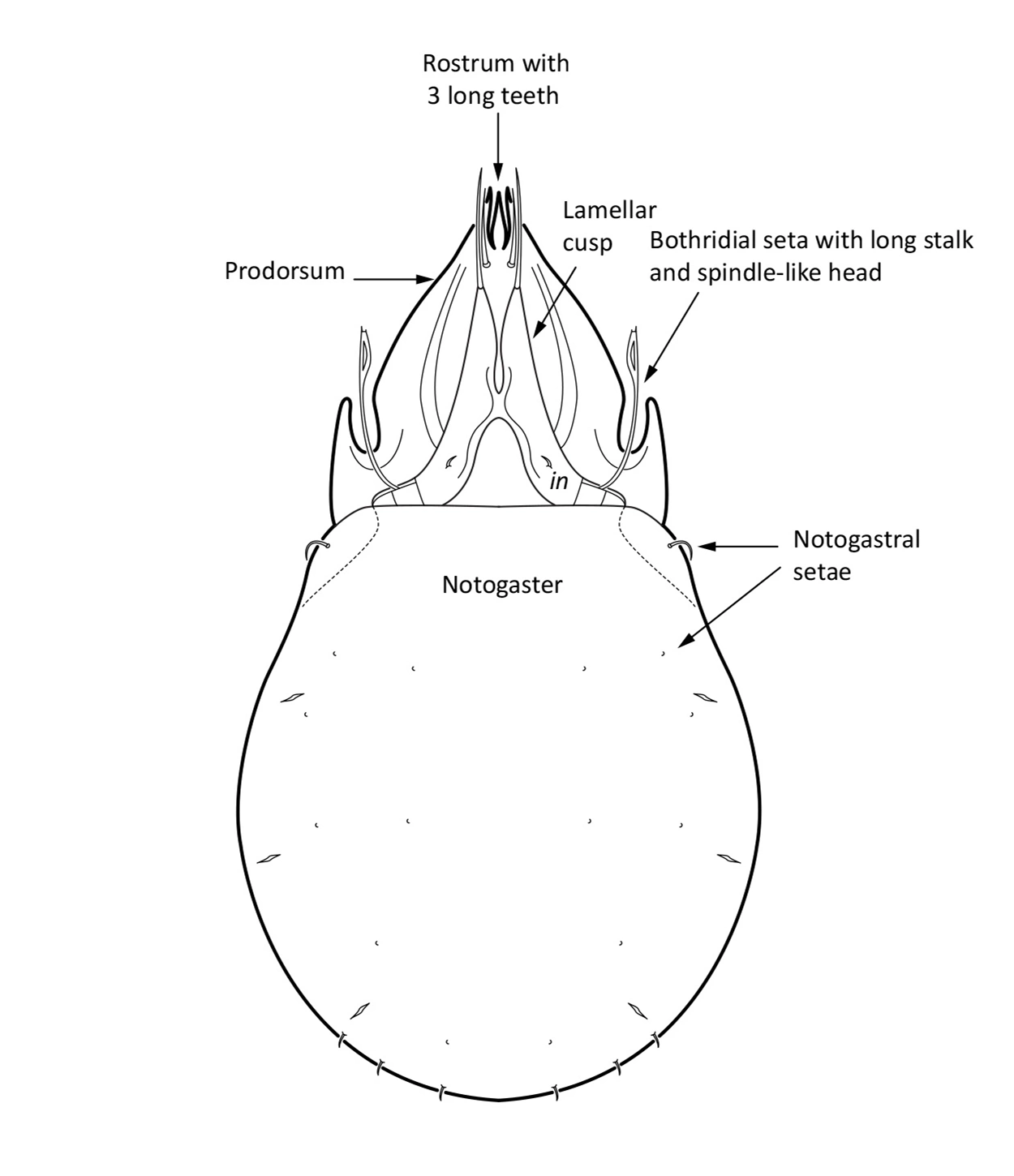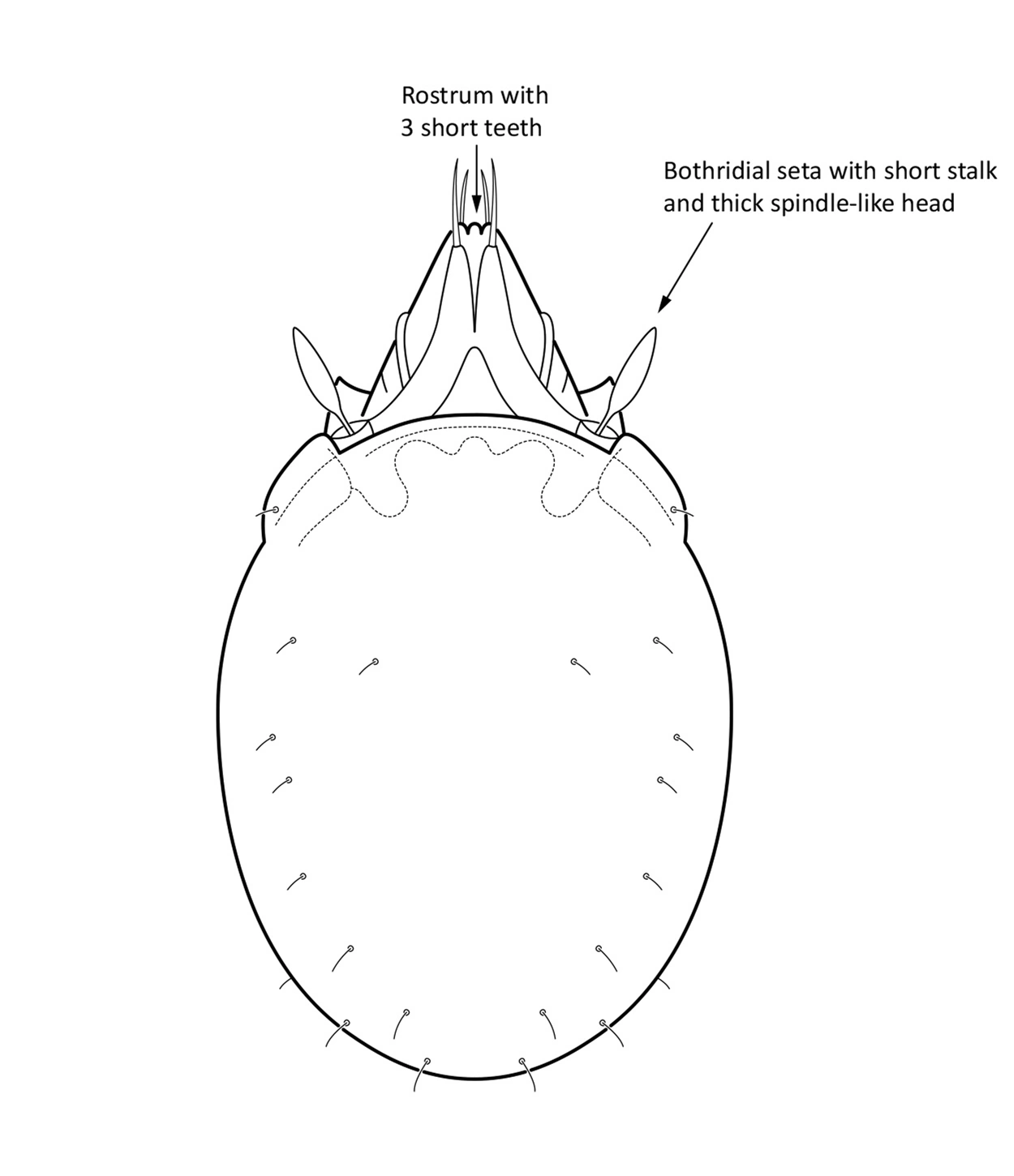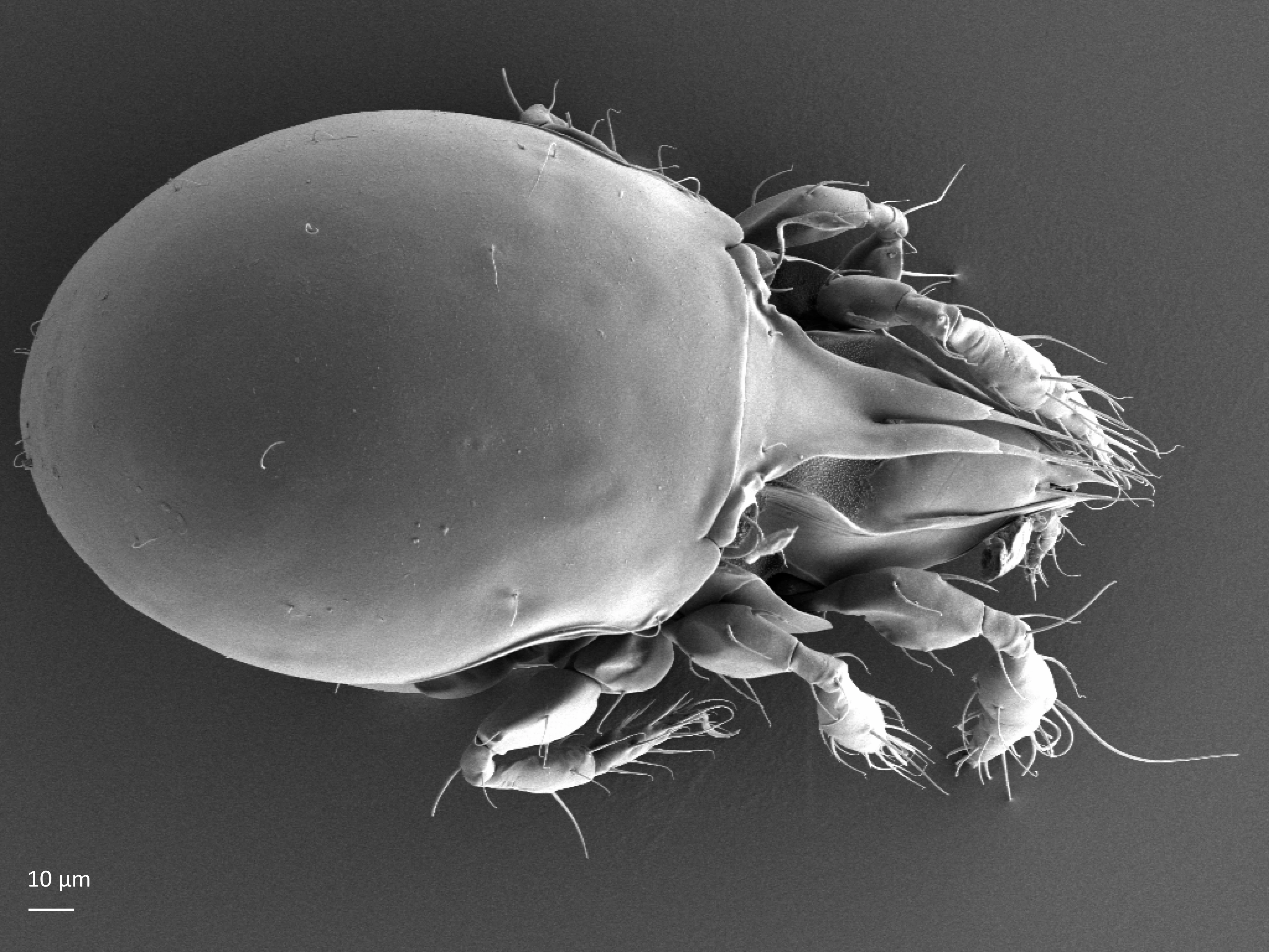Cultroribula bicultrata
Cultroribula bicultrata is found in the Holarctic. In Norway it was first found in 2019, in a wet broadleaf forest. It is characteristic of organic layers of acidic forest soils. It reproduces parthenogenetically, only females are present and they are produced from unfertilized eggs.
Description

Fig. 1. Dorsal view of Cultroribula bicultrata, adult.

Fig. 2. Dorsal view of Cultroribula juncta, adult.
Adult: The body length is 225–250 µm, and width is 135 µm. The color is light to dark brown. It has legs with one claw. Rostrum is prolonged (stretched forward) and has three long teeth (Fig 1). The lamellar cusps are long, slender, rounded. Interlamellar setae is very short and fine. Bothridial seta has a long stalk and a spindle-like head. Notogaster bears 10 pairs of very short to vestigial setae.
Juvenile stages: unknown.
Look-alikes
It is similar to Cultroribula juncta (Michael, 1885), but has three long teeth on the rostrum (Fig. 1), while C. juncta (Fig. 2) has three short teeth. It has legs with one claw, while C. juncta has three claws (two side claws are thinner than the middle claw). Bothridial seta of C. bicultrata has a long stalk and a spindle-like head, and this of C. juncta has a short stalk and a thick spindle-like head.
Biology
The reproduction is parthenogenetic, only females are present and they are produced from unfertilized eggs. Its development and feeding preferences have not yet been studied.
Ecology
Distribution
The distribution of C. bicultrata is holarctic, it is frequent in the Palearctic, and it is also known from the Indonesian island Java.
Habitat
It is a characteristic species of organic layers of acidic forest soils.
Findings in Norway
The species was first found in Norway in 2019. It was found in dead wood in a wet forest in Western Norway. The forest was a mixture of low-herb forest and riparian forest adjacent to a fast-flowing stream. Among ca. 6000 oribatid mite specimens examined from this forest only one adult specimen of Cultroribula bicultrata was found.
References
Bernini F (1969). Notulae Oribatologicae I. Contributo alla conoscenza degli Oribatei (Acarida) della Pineta dei S. Vitale (Ravenna). Redia, 51, 329–375.
Seniczak A, Bolger T, Roth S, Seniczak S, Djursvoll P and Jordal BH (2019). Diverse mite communities (Acari: Oribatida, Mesostigmata) from a broadleaf forest in western Norway. Annales Zoologici Fennici 56(1), 121-136. doi.org/10.5735/086.056.0111
Subías LS (2004). Listado sistemático, sinonímico y biogeográfico de los ácaros oribátidos (Acariformes, Oribatida) del mundo (excepto fósiles). Graellsia 60 (número extraordinario), 3-305.
Weigmann G (2006). Hornmilben (Oribatida). Die Tierwelt Deutschlands. 520 pp. Vol. 76, Goecke and Evers, Keltern.
Siden siteres som:
Seniczak A (2020). Cultroribula bicultrata (Berlese, 1905). www.artsdatabanken.no/Pages/286339. Nedlastet <dag/måned/år>
